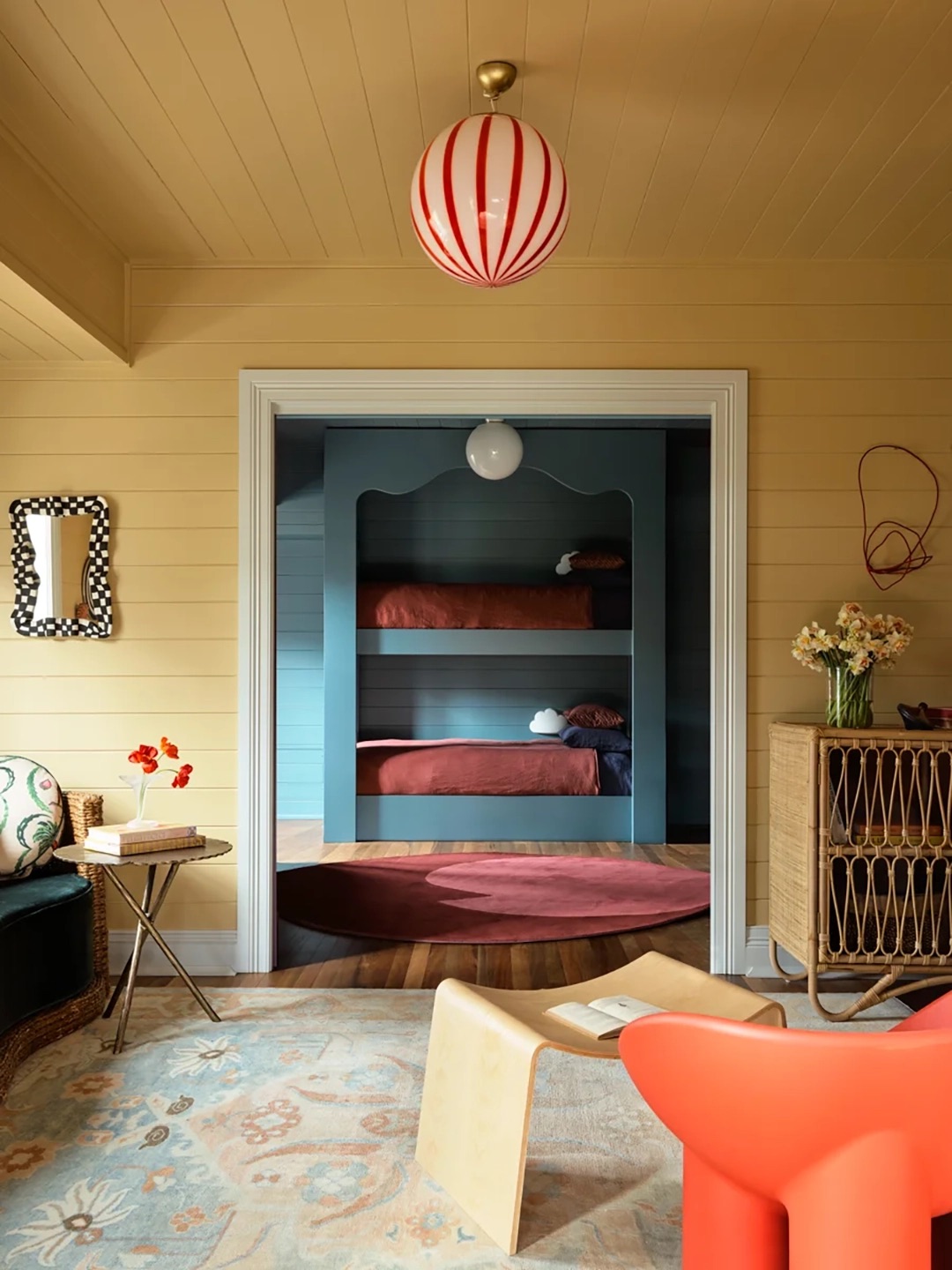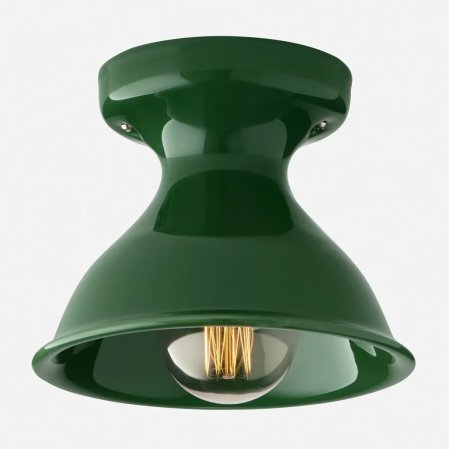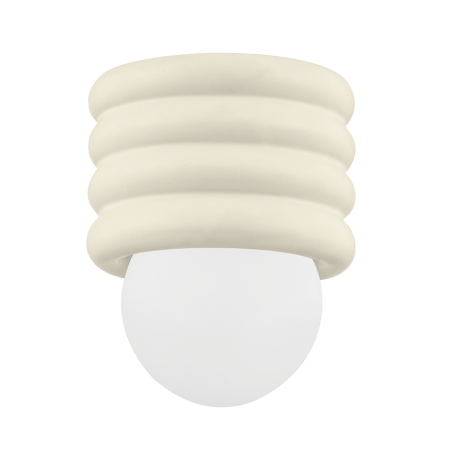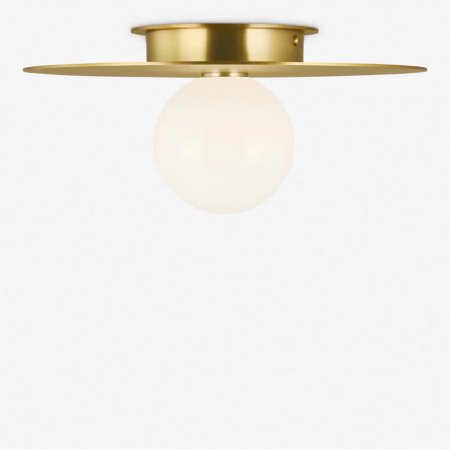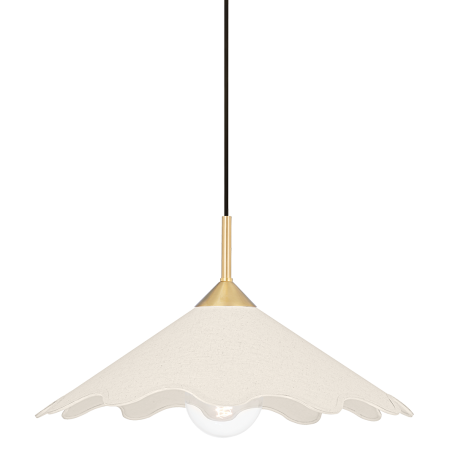We may earn revenue from the products available on this page and participate in affiliate programs.
At the beginning of 2023, writer Morgan Sung Internet-famously wrote: “Sometimes I’m like why am I irrationally angry and then I’m like oh there’s an overhead light on.”
Her tweet got 4.4 million views, did the Instagram circuit, and brought a zillion like-minded luminosity haters out of the woodwork. Coming out as a person who dislikes ceiling lighting became a personality trait.
It’s not that the masses are wrong—many designers have hated flush mounts and their sub-category, boob lights, for years. In an interview I did with Jenna Lyons, the designer declared: “I refuse to have any overhead lighting in my house.” It creates shadows and can highlight wrinkles. It can be too bright. It directs light to just one spot, as opposed to diffusing it across the room. And it can make people cranky. “I did put them in the closet because I really wanted to be able to see the clothes,” Lyons says. “And every time I turn them on, I’m upset with myself.”
My own relationship with overhead lighting started early, in one of my favorite places: my town’s subterranean children’s library. Similarly, in my parents’ suburban split-level, bulbs lived in ceiling fans. I also loved school, which, in the ’90s, was notorious for its fluorescent fixtures.

Ever since then, I’ve never really seen the problem with it. The thing is, you need overhead lighting to be able to see properly, whether you’re reading a book, learning math, cooking, or cleaning. During puzzle season, it’s the only way my fiancé and I can get the pieces into place after the sun goes down. Even my friend who is a television and film set designer—a confirmed overhead-lighting hater—admits it’s useful when she’s looking for something. And as a renter, it’s a boon: You don’t need to buy a lamp or wrangle cords or use a precious outlet and surface space. You can also turn it on with one flip of a switch, an important ADA requirement in public spaces. To me, the good outweighs the bad, even if I’m in the Internet minority. How did we all get here, exactly? Let’s dive in.
First, We Need to Define Overhead Lighting
When I hear people complain about overhead lighting, I like to reply, “So you hate the sun?” But I know that’s not what they’re talking about. What I think people mean is that they hate recessed lighting, which only illuminates certain areas, much like a spotlight. Or boob lights, which come with most rentals and don’t provide much in the way of style or choice in brightness.

They are also probably referring to the unflattering arctic white glow that is fluorescent ceiling lights. I’ll give them that one—their quick, constant flashing, which is mostly invisible, is said to trigger migraines and eye strain in some people. “I grew up with fluorescent overhead lights in my living room,” says designer Dabito, before adding, “But I’ve worked through that trauma.”
But what about chandeliers, pendant lamps, and task lighting? It can’t all be the worst, right?
“Dimmer or Death”
On a recent panel I hosted for Mitzi, a popular lighting brand, I asked the four panelists, all seasoned designers, the controversial question at hand: Overhead lighting—oh yes or oh no? Almost in unison, the group quickly responded: Oh yes!
Seee?
Just as speedily, Dabito amended his answer: “But on a dimmer.” That seems to be the consensus: If you have an overhead light, dear God let it be on a dimmer. Or as Jessica Romm Perez, former Domino editor in chief and vice president of partnerships at The Expert, put it over DM to me: “Dimmer or death.”

A dimmer is an easy hardware store purchase—I recently got one for around $35. All of a sudden, you can set a sexy glow over your dinner party or crank it up when it’s time to vacuum and you want to actually see what you’re sucking up. When when it’s cozy time, interior designer Heather Spaulding of Sunday Supper Club Creative says the overhead light should be dimmed to a lower level than surrounding lamps.
Another quick fix: Switching out your bulbs from cool to warm can make a difference in how an overhead light feels, and most LED smart ones will let you choose from a range of tones. Long Island–based designer Danielle Chiprut suggests 2,700k for soft, flattering illumination.
Reminder: Not Everyone Hates It
Robby Simon, the Atlanta-based furniture designer behind Playroom, doesn’t get all the fuss about lighting that comes from above. “People just don’t know how to elevate it,” he says.
He also has personal reasons: “Millennials [like myself] are very into what my wife and I call ‘Final Destination-core.’ It’s basically where you have plotted out your death in any situation that you’re walking into. For me, I don’t want dark ceilings because I’m envisioning the demon lady from Hereditary being up there. I’m not playing games.”
Simon suggests replacing boob lamps with statement fixtures you actually like (he loves the fringed ones by Llot Llov), keeping in mind that they can offer a chance to show off a cool ceiling or architecture. Dabito, also on Team Overhead Lighting, says: “I always think of a chandelier as an earring for your room.”

Even renters can sway a landlord into swapping unappealing overheads for something more pleasant, and I have proof: I recently replaced a just-fine silver chandelier with IKEA’s Sabine Marcelis LED pendant lamp. It doesn’t dim, but as you may have guessed, I don’t mind.

